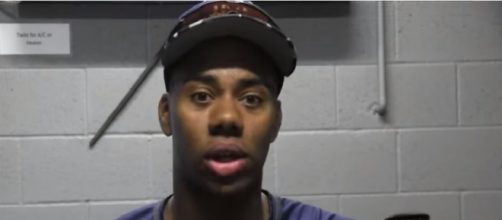Hunter Greene has made the leap from high school to professional baseball. There was a chance that the multi-talented player would be drafted first overall in the 2017 MLB Draft, but that possibility didn't come to pass. Instead, the Cincinnati Reds swooped him up with the second overall pick in the draft. Next up: the lengthy journey it generally takes to make it from draft night to Major League Baseball.
Greene goes No. 2
After the Minnesota Twins surprisingly took shortstop Royce Lewis with the first pick on Monday night, the Reds were on the clock.
They wasted no time in making the California high school star their pick. He quickly donned a cap - he was one of four prospects actually in attendance - and spoke to the MLB Network about how his dream was coming true after being drafted, even though he didn't go at the very top. Then, it became time for Greene to get to work on potentially shifting to a single position.
Greene is able to dial up 102 MPH on the mound. But he can also rake at the plate as a hitter, drawing comparisons to Alex Rodriguez in the batter's box. When the Reds make their pick, their new prospect was announced as a pitcher, as expected. It's a tough decision to make it: pitchers have a larger impact on the games they play than hitters, but position players compete in almost five times as many games as a starting pitcher over the course of a season.
Cincinnati reserves the right to change their decision as their new star develops.
How Greene fits in Cincinnati
Fresh out of high school, it will likely take Greene two or three years to reach the majors, at the earliest. By then, the entire makeup of the Reds roster could be different. That's the most frustrating part about the MLB Draft - unlike its counterparts in the NBA or NFL, impacts aren't immediate; it takes years for the fruits of a draft pick to bloom.
Cincinnati has one of the worst rotations in all of baseball. Once upon a time, they had young aces like Johnny Cueto and Homer Bailey (who is on the disabled list). Now they are being led by Scott Feldman and Bronson Arryoyo, two tried-and-true veterans whose best days are well behind them.
Amir Garrett is a young pitcher with some potential, but he is far from a sure thing going forward. The front office will hope that they can build a better rotation - and with it, a National League contender - around Hunter Greene, who still has a long way to go before he's playing in the major leagues.


